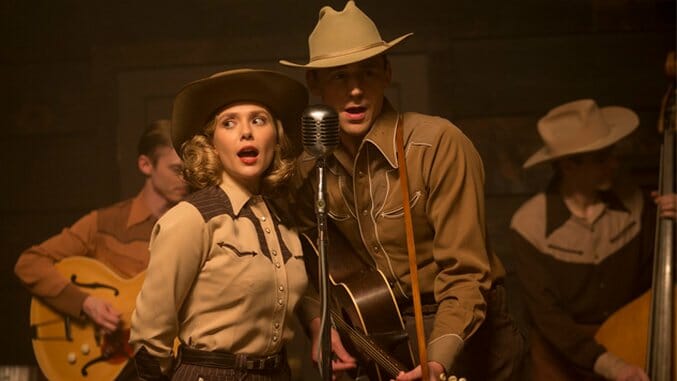I Saw The Light: Returning Hank Williams’ Music to the Spotlight

As two music-lovers with ties to the Commonwealth of Virginia, speaking with Marc Abraham has all the comforts of sittin’ down on the porch with some sweet tea to soak in the humid air and reminisce about time in Old Dixie. Abraham, a film writer, director, and producer whose first role came co-producing beloved music movie The Commitments in 1991, speaks with a surprisingly quiet lilt. His Louisville (pronounced authentically as loo-uh-ville) accent remains intact.
Growing up in Kentucky, Abraham has listened to country music since he was a kid, citing Johnny Cash, George Jones, and Merle Haggard and early introductions to the genre.
“I’ve always loved the stories, and when you listen to that music you can’t help but eventually hear Hank’s music,” he says on a call from the place that best represents the antithesis of The South—Los Angeles. “Of course music aficionados know everything about Hank, but so many people don’t know what a brilliant poet he was.”
Abraham’s passion for music is inseparable from his daily life even today. He listens to classical music in the mornings, classic and modern hip-hop in the car (thanks to his 17-year-old twin boys who, “immediately commandeer the Aux cable”), and jazz heroes like Dizzy Gillespie, John Coltrane, Miles Davis and Erroll Garner over a nightcap in the evenings.
So when Abraham read Colin Escott’s award-winning book, Hank Williams: The Biography, he started envisioning the movie that would become I Saw The Light almost immediately.
I Saw The Light doesn’t purport to be a biopic, though. And Abraham never intended to explain why Hank Williams is the revered poet and country music legend we know today. He compares the phenomenon to another of his favorite artists—Bob Dylan.
“I can’t explain to you why [Hank] is so great! I can’t explain to you why Bob Dylan, a guy named Bob Zimmerman whose father ran a furniture store in hippie Minnesota, is Bob Dylan. I don’t know how to explain that. So I’m not going to do that in the film,” he reasons.
“What I tried to do in the movie is not to show you somebody sitting down with a pen or pencil and writing a song, which I just don’t know how interesting that is, but also I don’t know how you show that. What I tried to do was show his life—this man fighting his various demons. And hopefully, by seeing what took place in his life, you can understand where the songs came from.”
Sometimes this tactic works in the film. The tensions in Williams’ personal life, especially between Tom Hiddleston’s Hank and Elizabeth Olsen’s Audrey, help show how songs like “Cold Cold Heart” or “Your Cheatin’ Heart” could come to fruition, at least emotionally. Tender moments like the two of them singing “I Saw The Light” to their infant Hank Williams Jr. flip the script in a beautifully sentimental way.
But more often then not, the choices for the narrative arc felt disjointed prior to Abraham’s clarifications. Williams’ chronic back problems—from spina bifida and scoliosis—were only alluded to in scenes showing him sitting down or falling in the woods (subsequently re-aggravating his less explicitly defined pre-existing conditions). In particular, the abortion scene is ambiguous for audiences who may not have known the couple’s tumultuous history (or are less privy to subtlety).
The most impressive element of I Saw The Light emerges in the performances themselves, and that’s thanks to the killer music production team Abraham united. With help from music producer, singer, songwriter, and country music icon Rodney Crowell, engineer Dan Knobler (of the musical collective Mason Jar Music), musicians like Chris Scruggs and Richard Bennett, and more, the classically trained, Shakespearean-inspired British actor Hiddleston transformed into a slouching, yodeling country music star who could effectively carry a tune.
-

-

-

-

-

-

-

-

-

-

-

-

-

-

-

-

-

-

-

-

-

-

-

-

-

-

-

-

-

-

-

-

-

-

-

-

-

-

-

-








































